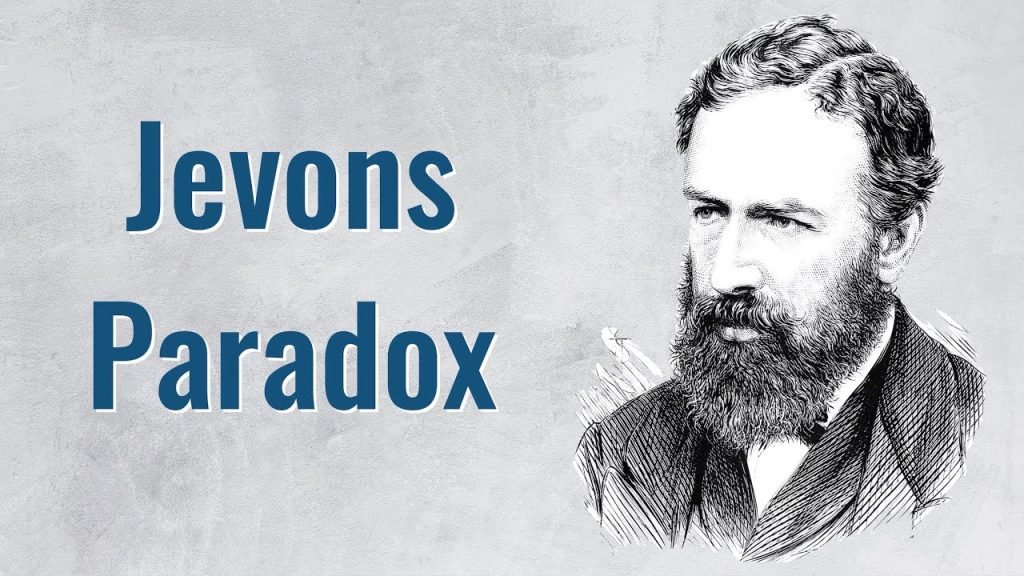“Jevons Paradox strikes again! As AI gets more efficient and accessible, we will see its use skyrocket, turning it into a commodity we just can’t get enough of.”
When Satya Nadella, CEO of Microsoft, made this statement, it hit a nerve. It’s not just a passing comment—it’s a reflection of a deeper economic and behavioral reality that’s becoming increasingly relevant in the age of AI and GenAI. Welcome to the return of Jevons Paradox, and trust us, it’s not just for economists anymore. 🧠💡
If you’re an IT Leader, a Learning & Development (L&D) professional, or part of a decision-making body in your organization, this isn’t just a fascinating concept to quote at your next strategy meeting. It’s a trend that could redefine how we look at AI adoption, training, infrastructure, and even organizational design. 🔍📈
What is Jevons Paradox? ❓
Let’s break it down without the jargon.
Jevons Paradox, named after the British economist William Stanley Jevons, suggests that as technology improves the efficiency of a resource, the consumption of that resource may actually increase instead of decrease.

The original paradox came from coal. Jevons noticed that as steam engines became more efficient, people used more coal, not less. The efficiency made coal-based energy cheaper and more accessible—so demand exploded. 💥
Now apply that same thinking to AI.
As AI and GenAI models get better, cheaper, and more user-friendly, you’d think we’d need less computing power, fewer resources, or fewer models. But in reality, we’re seeing an explosion in AI use cases, data consumption, and compute cycles. 🔄💻
Why This Matters in 2025: The AI Boom Isn’t Slowing Down 📊
The current wave of GenAI is turbocharged by the accessibility of tools like ChatGPT, GitHub Copilot, and Microsoft Copilot for Office apps. Once limited to developers and researchers, AI is now on everyone’s desktops and mobile screens—from HR managers writing job descriptions to finance analysts building predictive dashboards. 🧾📊
And here’s the kicker: the more we simplify and democratize AI, the more it gets used, leading to an exponential increase in demand for compute, training data, talent, and infrastructure. 🧮📡
This is Jevons Paradox, 2.0.
What This Means for IT Leaders 💼
- Prepare for Unplanned Growth in AI Adoption
- The ease of use creates a flood of adoption across departments.
- Shadow AI projects will emerge. Teams may build AI solutions without formal governance.
- Budgeting Must Reflect Hidden Costs 💸
- While GenAI tools might seem affordable per seat, their impact on cloud infrastructure, storage, and compute usage can be significant.
- Licensing models based on usage may escalate costs quickly.
- A New Approach to AI Governance is Needed 📜
- Establish internal guidelines for AI usage.
- Define ethical, legal, and operational boundaries.
- Cloud and Compute Strategy Needs an Upgrade ☁️⚙️
- Plan for higher compute usage.
- Invest in cloud cost optimization tools and policies.
What This Means for L&D Professionals 🎓
- Training Demand Will Surge Across Roles
- Everyone from finance to marketing will need GenAI literacy.
- Develop role-specific training modules that go beyond the basics.
- Learning Programs Must Evolve—Fast ⏩
- Traditional training cycles are too slow for AI.
- Adopt microlearning, AI-powered learning assistants, and real-time help systems.
- Focus on Critical Thinking and Judgment 🧠⚖️
- GenAI can generate answers—but humans still need to validate and make decisions.
- Emphasize human-in-the-loop models in your L&D roadmap.
- Workforce Transformation is Inevitable 🔄
- Upskilling isn’t optional anymore.
- Cross-train teams to prepare for AI-driven roles and workflows.
How Organizations Can Respond Proactively 🛠️
At OPTIMISTIK INFOSYSTEMS, we’ve been closely tracking the intersection of AI trends, organizational behavior, and economic models. Here’s how forward-thinking companies are staying ahead of the Jevons Paradox curve:
1. Build AI Fluency at All Levels 🗣️
We’re designing training programs for everyone—from frontline employees to CXOs—focused on AI fluency, practical use cases, and responsible adoption. You don’t need to code, but you do need to know how to use AI wisely.
2. Redesign L&D for the AI Age 🧩
Our custom L&D frameworks incorporate:
- Domain-specific GenAI training (e.g., Healthcare, Manufacturing, IT)
- Cross-functional AI adoption playbooks
- Sandbox environments to experiment with AI tools 🧪
3. Promote AI with Purpose 🎯
We guide organizations in aligning AI use with business goals and ethics. Not every task needs automation. Not every model needs deployment. Strategic adoption is the key.
4. Focus on AI Sustainability 🌱
We help clients optimize AI usage by:
- Monitoring compute impact
- Avoiding model bloat
- Encouraging model reusability
The Takeaway: More Efficiency, More Usage, More Responsibility 🛡️
Satya Nadella’s quote isn’t just clever—it’s prophetic. AI’s rise in efficiency is triggering a dramatic surge in usage across sectors. That’s Jevons Paradox at work.
But understanding it gives you the edge. You can:
- Plan better 📅
- Train smarter 🧑🏫
- Govern more effectively 👨⚖️
At OPTIMISTIK INFOSYSTEMS, we’re not just delivering AI training. We’re helping build AI-ready organizations that understand the trends shaping the future. 🌐
Let’s Talk. 💬
If you’re an IT Leader or L&D Head wondering how to prepare your workforce for the AI era without falling into the Jevons trap, we’d love to connect. Let’s co-create a smarter, sustainable, and more empowered future with AI.
#AITraining #GenAI #JevonsParadox #LearningAndDevelopment #FutureOfWork #OptimistikInfosystems #AITalent #SustainableAI #TechTrends2025